81-77-6
| 中文名 | 颜料蓝60 |
|---|---|
| 英文名 | Vat Blue 4 |
| 中文别名 |
还原蓝 4
还原蓝RS 6,15-二氢二蒽并哒嗪-5,9,14,18-四酮 颜料蓝 GR 还原蓝RD 还原蓝RD 阴丹士林蓝 蒽醌蓝 阴丹酮 颜料蓝 60 阴丹酮 |
| 英文别名 |
blueo
indanthrone Blue 60 e130 vat c.i.1106 ponsolrp foodblue4 vatblueod l-blau1 Pigment Blue 60 anthraquinone blue EINECS 201-375-5 vatblueo indanthrene 6,15-dihydroanthrazine-5,9,14,18-tetrone |
| 密度 | 1.487 g/cm3 |
|---|---|
| 沸点 | 740.2ºC at 760 mmHg |
| 熔点 | 470-500°C |
| 分子式 | C28H14N2O4 |
| 分子量 | 442.42200 |
| 闪点 | 253.9ºC |
| 精确质量 | 442.09500 |
| PSA | 99.86000 |
| LogP | 4.14060 |
| 外观性状 | 蓝色针状,带有一种金属光泽 |
| 折射率 | 1.746 |
| 储存条件 | 密封于阴凉处保存。 |
| 稳定性 | Incompatible with strong oxidizing agents. |
| 水溶解性 | 水溶性:不溶;可溶于:硫酸;不溶:醇,乙醚 |
| 分子结构 | 1、 摩尔折射率:120.71 2、 摩尔体积(cm3/mol):297.4 3、 等张比容(90.2K):859.7 4、 表面张力(dyne/cm):69.8 5、 极化率(10-24cm3):47.85 |
| 计算化学 | 1.疏水参数计算参考值(XlogP):4.9 2.氢键供体数量:2 3.氢键受体数量:6 4.可旋转化学键数量:0 5.互变异构体数量:28 6.拓扑分子极性表面积92.3 7.重原子数量:34 8.表面电荷:0 9.复杂度:857 10.同位素原子数量:0 11.确定原子立构中心数量:0 12.不确定原子立构中心数量:0 13.确定化学键立构中心数量:0 14.不确定化学键立构中心数量:0 15.共价键单元数量:1 |
| 更多 | 1. 性状:深蓝色粉末 2. 密度(g/mL,25/4℃):未确定 3. 相对蒸汽密度(g/mL,空气=1):未确定 4. 熔点(ºC):未确定 5. 沸点(ºC,常压):未确定 6. 沸点(ºC,5.2kPa):未确定 7. 折射率:未确定 8. 闪点(ºC):未确定 9. 比旋光度(º):未确定 10. 自燃点或引燃温度(ºC):未确定 11. 蒸气压(kPa,25ºC):未确定 12. 饱和蒸气压(kPa,60ºC):未确定 13. 燃烧热(KJ/mol):未确定 14. 临界温度(ºC):未确定 15. 临界压力(KPa):未确定 16. 油水(辛醇/水)分配系数的对数值:未确定 17. 爆炸上限(%,V/V):未确定 18. 爆炸下限(%,V/V):未确定 19. 溶解性:不溶于水、乙酸、乙醇、吡啶、二甲苯、甲苯,微溶于氯仿 (热)、邻氯苯酚、喹啉。于浓硫酸中呈棕色,稀释后产生蓝色沉淀。于保险粉碱性溶液中呈蓝色,于酸性液中呈红光蓝色。 |
|
Section I.Chemical Product and Company Identification Chemical Name Indanthrone Portland OR SynonymC.I. Pigment Blue 60, Cl. 69800 Chemical FormulaC28H14N2O4 CAS Number81-77-6 Section II.Composition and Information on Ingredients Chemical NameCAS Number Percent (%)TLV/PELToxicology Data Indanthrone81-77-6--------- Not available.Rat LD50 (oral) 2000mg/kg Section III. Hazards Identification Acute Health EffectsNo specific information is available in our data base regarding the toxic effects of this material for humans. However, exposure to any chemical should be kept to a minimum. Skin and eye contact may result in irritation. May be harmful if inhaled or ingested. Always follow safe industrial hygiene practices and wear proper protective equipment when handling this compound. CARCINOGENIC EFFECTS : Not available. Chronic Health Effects MUTAGENIC EFFECTS : Not available. TERATOGENIC EFFECTS : Not available. Toxicity to the reproductive system: Not available. There is no known effect from chronic exposure to this product. Repeated or prolonged exposure to this compound is not known to aggravate existing medical conditions. Section IV.First Aid Measures Eye ContactCheck for and remove any contact lenses. DO NOT use an eye ointment. Flush eyes with running water for a minimum of 15 minutes, occasionally lifting the upper and lower eyelids. Seek medical attention. Treat symptomatically and supportively. Skin Contact If the chemical gets spilled on a clothed portion of the body, remove the contaminated clothes as quickly as possible, protecting your own hands and body. Place the victim under a deluge shower. If the chemical touches the victim's exposed skin, such as the hands: Gently and thoroughly wash the contaminated skin with running water and non-abrasive soap. Be particularly careful to clean folds, crevices, creases and groin. Cover the irritated skin with an emollient. Seek medical attention. Treat symptomatically and supportively. Wash any contaminated clothing before reusing. InhalationIf the victim is not breathing, perform artificial respiration. Loosen tight clothing such as a collar, tie, belt or waistband. If breathing is difficult, oxygen can be administered. Seek medical attention. Treat symptomatically and supportively. IngestionRemove dentures if any. Have conscious person drink several glasses of water or milk. INDUCE VOMITING by sticking finger in throat. Lower the head so that the vomit will not reenter the mouth and throat. NEVER give an unconscious person anything to ingest. Seek medical attention. Treat symptomatically and supportively. Section V. Fire and Explosion Data Not available. FlammabilityCombustible.Auto-Ignition Flammable Limits Flash PointsNot available. Not available. Combustion ProductsThese products are toxic carbon oxides (CO, CO 2), nitrogen oxides (NO, NO2). Fire Hazards No specific information is available regarding the flammability of this compound in the presence of various materials. Explosion HazardsRisks of explosion of the product in presence of mechanical impact: Not available. Risks of explosion of the product in presence of static discharge: Not available. No additional information is available regarding the risks of explosion. Fire Fighting Media SMALL FIRE: Use DRY chemicals, CO 2, water spray or foam. and InstructionsLARGE FIRE: Use water spray, fog or foam. DO NOT use water jet. Continued on Next Page Indanthrone Section VI.Accidental Release Measures Spill CleanupIn case of a spill and/or a leak, always shut off any sources of ignition, ventilate the area, and exercise caution. Use a Instructionsshovel to put the material into a convenient waste disposal container. Finish cleaning the spill by rinsing any contaminated surfaces with copious amounts of water. Consult federal, state, and/or local authorities for assistance on disposal. DSD/Pictogra Handling and Storage Handling and StorageKeep away from heat and sources of ignition. Mechanical exhaust required. When not in use, tightly seal the container and store in a dry, cool place. Avoid excessive heat and light. DO NOT breathe dust. In case of insufficient ventilation, Information wear suitable respiratory equipment. If you feel unwell, seek medical attention and show the label when possible. Treat symptomatically and supportively. Avoid contact with skin and eyes. Always store away from incompatible compounds such as oxidizing agents. Section VIII. Exposure Controls/Personal Protection Engineering ControlsUse process enclosures, local exhaust ventilation, or other engineering controls to keep airborne levels below recommended exposure limits. If user operations generate dust, fume or mist, use ventilation to keep exposure to airborne contaminants below the exposure limit. Personal ProtectionSplash goggles. Lab coat. Dust respirator. Boots. Gloves. A MSHA/NIOSH approved respirator must be used to avoid inhalation of the product. Suggested protective clothing might not be sufficient; consult a specialist BEFORE handling this product. Exposure LimitsNot available. Section IX. Physical and Chemical Properties Solubility Physical state @ 20°CPowder.Insoluble in cold water, hot water, methanol, diethyl ether, acetone. Not available. Specific Gravity Molecular Weight442.43Partition CoefficientNot available. Boiling PointNot available.Vapor PressureNot available. Melting PointNot available.Vapor DensityNot available. Not available.VolatilityNot available. Refractive Index Critical TemperatureOdorNot available. Not available. ViscosityNot available.TasteNot available. Section X.Stability and Reactivity Data Stability This material is stable if stored under proper conditions. (See Section VII for instructions) Conditions of Instability Avoid excessive heat and light. Incompatibilities Reactive with strong oxidizing agents. Section XI. Toxicological Information RTECS NumberCB8761100 Routes of ExposureEye contact. Ingestion. Inhalation. Rat LD50 (oral) 2000mg/kg Toxicity Data Chronic Toxic EffectsCARCINOGENIC EFFECTS : Not available. MUTAGENIC EFFECTS : Not available. TERATOGENIC EFFECTS : Not available. Toxicity to the reproductive system: Not available. There is no known effect from chronic exposure to this product. Repeated or prolonged exposure to this compound is not known to aggravate existing medical conditions. Acute Toxic EffectsNo specific information is available in our data base regarding the toxic effects of this material for humans. However, exposure to any chemical should be kept to a minimum. Skin and eye contact may result in irritation. May be harmful if inhaled or ingested. Always follow safe industrial hygiene practices and wear proper protective equipment when handling this compound. Continued on Next Page Indanthrone Section XII.Ecological Information EcotoxicityNot available. Environmental FateNot available. Section XIII. Disposal Considerations Recycle to process, if possible. Consult your local or regional authorities. You may be able to dissolve or mix material with Waste Disposal a combustible solvent and burn in a chemical incinerator equipped with an afterburner and scrubber system. Observe all federal, state, and local regulations when disposing of this substance. Section XIV. Transport Information DOT ClassificationNot a DOT controlled material (United States). PIN NumberNot available. Proper Shipping Name Not available. Packing Group (PG)Not available. DOT Pictograms Section XV. Other Regulatory Information and Pictograms TSCA Chemical InventoryThis product is ON the EPA Toxic substances control act (TSCA) inventory. (EPA) WHMIS Classification Not controlled under WHMIS (Canada). (Canada) EINECS Number (EEC) Not available. EEC Risk StatementsNot available. SECTION 16 - ADDITIONAL INFORMATION N/A |
|
毒理学数据: 1、急性毒性 大鼠口径LD:2 mg/kg;大鼠气管LD50: 250 mg/kg; CHEMICAL IDENTIFICATION
HEALTH HAZARD DATAACUTE TOXICITY DATA
|
| 危害码 (欧洲) | Xi |
|---|---|
| 风险声明 (欧洲) | R20/21/22 |
| 安全声明 (欧洲) | 22-36/37/39 |
| RTECS号 | CB8761100 |
| 海关编码 | 3204170000 |
| 上游产品 10 | |
|---|---|
| 下游产品 2 | |
| 海关编码 | 2933990090 |
|---|---|
| 中文概述 | 2933990090. 其他仅含氮杂原子的杂环化合物. 增值税率:17.0%. 退税率:13.0%. 监管条件:无. 最惠国关税:6.5%. 普通关税:20.0% |
| 申报要素 | 品名, 成分含量, 用途, 乌洛托品请注明外观, 6-己内酰胺请注明外观, 签约日期 |
| Summary | 2933990090. heterocyclic compounds with nitrogen hetero-atom(s) only. VAT:17.0%. Tax rebate rate:13.0%. . MFN tariff:6.5%. General tariff:20.0% |


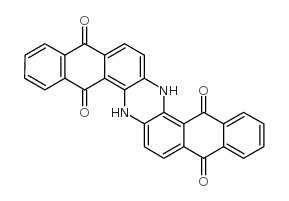

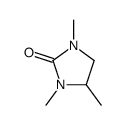
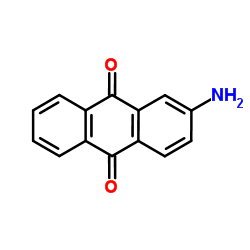
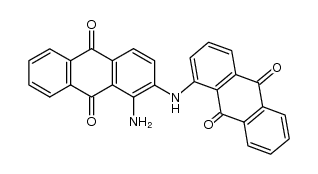

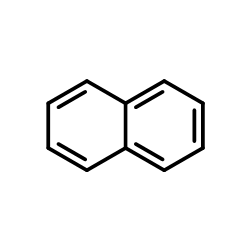
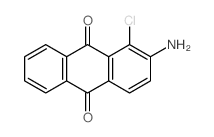
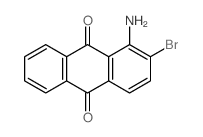

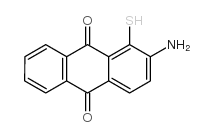
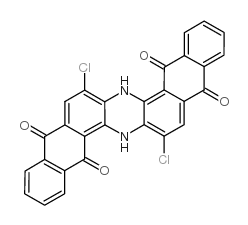
![2,3-dihydroxy-naphth[2,3-f]quinoxaline-7,12-dione结构式](https://image.chemsrc.com/caspic/312/6259-70-7.png)